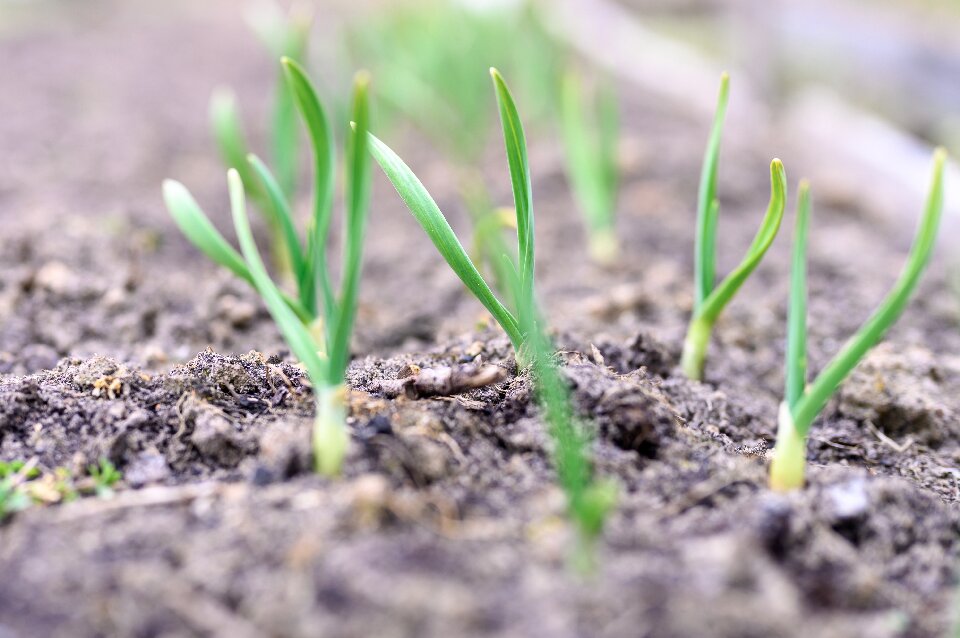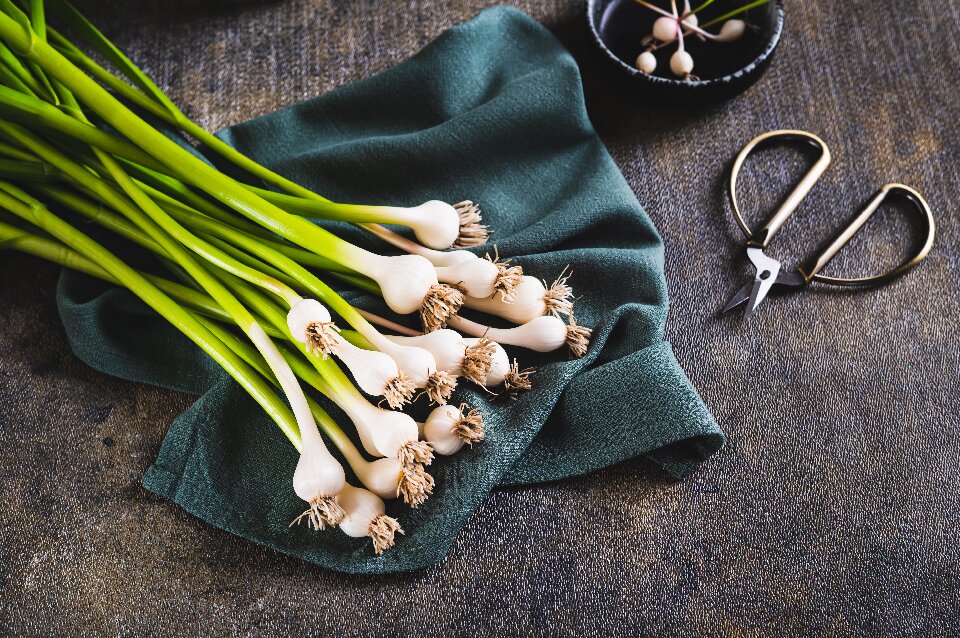How Long Does Garlic Take to Grow
If you are a garlic addict who adds garlic to most dishes, the good news is that instead of going to the grocery store, you can easily grow garlic at home. Numerous home gardeners have proven it’s a rewarding experience with yielding flavorful garlic bulbs. Before you start, you may wonder ‘how long does garlic take to grow’ or ‘what are the garlic growing stages’. Don’t worry, this guide will walk you through the six main stages of garlic growth, from planting seeds to harvest.
How Long Does It Take for Garlic to Grow
Typically, garlic takes 8 to 10 months to mature after planting the seeds. The exact duration depends on the variety and climate. In most regions, garlic is planted in late fall or early winter( from late September to November) before the ground freezes, allowing it to establish roots over winter and manage to sprout in spring. By the end of summer, somewhere around June to August, you can harvest the full bulbs of garlic. But if you plan to grow garlic indoors, the timing doesn’t matter that much.
However, if you prefer a small yield like green garlic, propagating garlic in water can refill your garlic collection much more quickly. You can expect to harvest garlic greens within 2 to 3 weeks of placing the cloves in water. The shoots will grow quickly and can be snipped off as needed for culinary use.
Hardneck Garlic vs Softneck Garlic
Garlic can be categorized into two main subspecies: hardneck garlic (Allium sativum var. ophioscorodon) and softneck garlic (Allium sativum var. sativum).
Hardneck garlic is known for its robust flavor and ability to produce flower stalks called scapes. It typically has fewer but larger cloves compared to softneck varieties. Hardneck garlic is well-suited for colder climates and generally has a shorter shelf life.
Common varieties include:
- Rocambole: Known for its rich flavor and easy-to-peel cloves.
- German Extra Hardy: Cold-hardy with a strong flavor, ideal for cooking.
- Music: A popular variety with a bold taste, often used in Italian dishes.
- Chesnok Red: Recognized for its sweet, mild flavor; great for roasting.
- Purple Stripe: Features beautiful purple streaks and a complex flavor.
Softneck garlic, on the other hand, is the most common type found in grocery stores. It has a softer stem that can be braided, making it easy to store. This type typically has more cloves per bulb and a longer shelf life than hardneck varieties.
Common Varieties:
- California Early: Mild flavor, often used in commercial production.
- California Late: Pungent and robust, excellent for cooking.
- Silverskin: Versatile with a strong flavor; great for pickling.
- Creole: Spicy flavor, often used in Cajun cuisine.
Stage 1: Planting Garlic Seeds before Winter
For indoor garlic growers, ignore the winter deadline. As long as you can provide a controlled environment with satisfying growing conditions, you can plant garlic seeds anytime you like. For outdoor gardeners, it’s suggested that garlic seeds be planted before the brutal winter comes. A good rule of thumb is to plant garlic about 2-3 weeks after the first frost and before the ground freezes solid. After spreading the seeds, give them time to establish roots over winter.
Here’s a detailed overview of when to plant garlic based on climate zones:
|
Climate Zone |
Garlic Planting Time |
|---|---|
|
Zone 0-3 |
Late August to early September |
|
Zone 3-5 |
Late September to early October |
|
Zone 5-7 |
Mid to late October |
|
Zone 7-9 |
Late October into November |
|
Zone 9-10 |
Late October into December |
Stage 2: Garlic Germination in Spring
After the cold winter passes by, here comes the germination stage, which lasts 1-2 months. Considering garlic seeds are mostly sowed in late fall, the earliest time for them to sprout should be in spring. During this stage, tiny green leaves emerge from the soil.
Stage 3: Green Garlic (Spring Garlic) Harvest
About 7 months after planting, in May, garlic enters the green garlic stage. The plants display long green leaves, and while the cloves haven’t fully matured, some gardeners harvest at this point for a tender, fresh garlic taste by dragging the whole plant off the ground. The green garlic stalks are flat like leeks, and the bulb is white with a hint of pink. This green garlic lacks dried skin and should be consumed within a week of harvesting.
If you prefer to hold on for a while, the garlic continues to grow and enters the scaping period.
Stage 4: Hardneck Garlic Scaping Harvest
For hardneck garlic varieties, flower stalks, known as scapes, start to form about 3 weeks after the green garlic stage. The scape appears as a curly tendril and, if left undisturbed, will eventually straighten and bloom into a striking white, spherical flower. These curly stalks are often removed to redirect energy to bulb growth rather than flower production, but they’re also edible and prized for their mild garlic flavor.
To remove the scapes, use a clean scissor to cut them from each plant. When you are short of garlic but there’s an emergency need, these scapes can serve as great garlic substitutes.
Stage 5: Young Bulb Stage
After removing the garlic scapes, the garlic keeps developing and bulbs begin to form underground. The key during this stage is to shift the nutrient balance from promoting leafy growth to encouraging bulb development. A fertilizer with a higher ratio of phosphorus and potassium relative to nitrogen (such as a 5-10-10 or similar formulation) can be beneficial. Also, consistent watering is a must.
In around 2-3 weeks, you can start harvesting young garlic bulbs directly from the soil in mid to late June. Although smaller in size, these premature bulbs offer a juicier and crisper texture with bright white, thicker skins, compared to mature garlic.
Stage 6: Mature Bulb Stage
One month later, in the middle of July, we are at the full bulb garlic stage where it reaches its full potential. Signs of maturity include yellowing of one-third to half of the leaves. At this point, the bulbs have developed their characteristic papery outer layers and are nearly ready for harvest, the iconic garlic you can find in grocery stores.
To harvest mature garlic, pull the entire plant from the soil and remove excess soil from the roots. When handling a bountiful harvest, place the plants on ventilated racks in the barn for 7-14 days to cure. This curing process significantly extends the garlic’s shelf life. Once cured, trim off the roots and stem, then sort the bulbs for further use.
When to Harvest Garlic
Depending on the variety you plant and the garlic form you want to harvest, when to harvest garlic can vary. In general, you can expect to harvest hardneck garlic in full bulbs after 10 months of sowing the seeds. For softneck garlic, it takes about 8-9 months to harvest the mature bulbs.
It’s also possible to harvest garlic anytime after the green garlic has formed, as we have pointed out in stage 3. The only problem lies in which garlic flavor you prefer, the tender one, or the spicy one?
FAQs about Garlic Growing Stages
- How many cloves are in a bulb of garlic?
On average, a typical softneck garlic generally has 8 to 12 cloves per bulb. Some hardneck varieties have 6-8 cloves in a single bulb, though these will be bigger sizes.
- How to know when garlic is ready to dig up?
Based on the look, garlic is ready to harvest when the lower leaves start to yellow and die back, usually when about one-third to half of the leaves have turned brown. This typically occurs in mid to late summer. Another indicator is when the untrimmed garlic scapes (in hardneck varieties) have straightened out.
- Can you leave garlic in the ground too long?
No, it’s not a wise move. If left in the soil after the leaves have died back completely, the bulbs may split open, making them more susceptible to rot and reducing their storage life. It’s best to harvest when some green is still visible on the upper leaves.
- Is sprouted garlic safe to eat?
Absolutely! Sprouted garlic is safe to eat. The sprouts may have a slightly bitter taste, but they’re not harmful. However, if the clove has turned soft, mushy, or shows signs of mold, it’s best to discard it.












